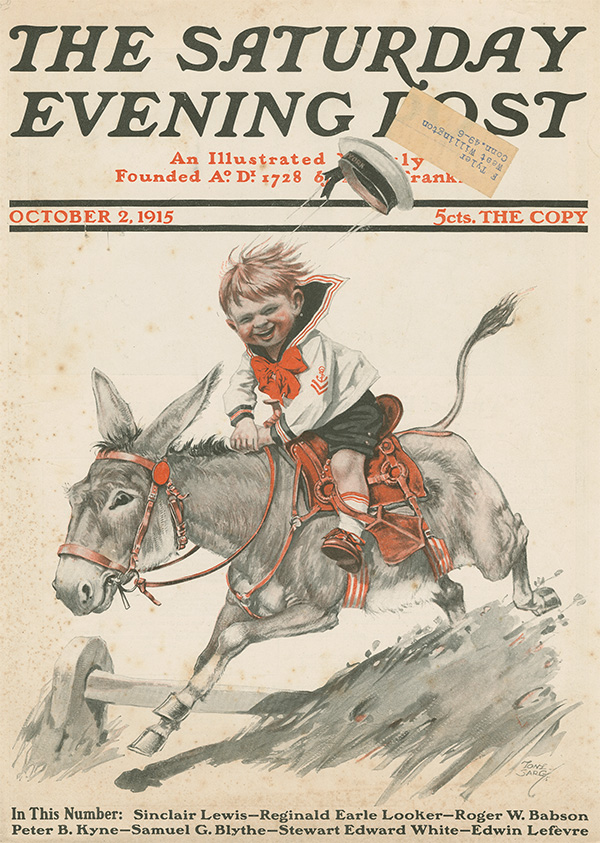Tony Sarg: Genius at Play
The Norman Rockwell Museum, Stockbridge MA • nrm.org • Through November 5, 2023

Tony Sarg (1880–1942) was an advertising impresario who invested his artistic skills in a multitude of commercial enterprises during the 1920s and 30s. His illustrations ranked with those of Norman Rockwell. He was a leading graphic designer, a major promoter of puppet theater, and a pioneer in animation technology before the digital age.
Yet he is scarcely known today. “That’s because he over-extended his business ventures, fell into bankruptcy and died relatively young without an advocate to preserve his legacy,” explained the Rockwell’s Stephanie Haboush Plunkett, co-curator with Lenore D. Miller of the George Washington University Museum, of this colorful, richly diverse exhibition.
It’s aim, she said, “is to bring this important American artist and public figure to light for new generations.”
Born in Guatemala to a well-to-do German father and English mother, Sarg was schooled in Germany and moved to England in 1905 to pursue a career in illustration and study marionette theater. He married, fathered a daughter, and brought his family to the U.S. in 1915 after the start of WWI.
Settling in New York, Sarg became a U.S. citizen and amped up his already successful illustration and design work with marionette theater skills to bring animation to his commercial ventures, among them a national puppet touring company.
His signature achievement—the helium-filled, aerial floats of animals and pop culture figures created for the 1927 Macy’s Thanksgiving parade—still delight crowds. His top promotional stunt was to stage sea monster sightings in 1937 near his Nantucket summer home and shop to draw national press attention to the island. The “monster” was a former Macy’s float.
This exhibition, which moves to the Nantucket Historical Association next summer, captures the skill, energy and diversity of Sarg’s engaging accomplishments in three, tightly packed, deftly edited galleries. One introduces viewers to his early work; another focuses on his puppetry and book projects; a third looks at his large-scale achievements like the Macy’s parade and the sea monster hoax.
For an immigrant artist who helped define an era of American pop culture, the exhibition is a step toward renewed recognition.
— Charles Bonenti
